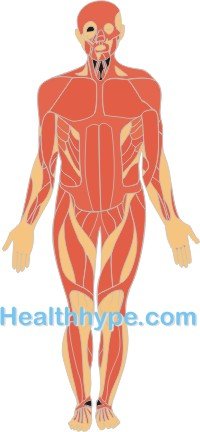What is Anterior and Posterior?
This article is solely intended to assist readers with a basic understanding of the terms anterior and posterior. It is not intended to be used as an educational resource and may be oversimplified.
Meaning of Anterior
Anterior is the anatomical term for indicating that an organ or structure is towards the front of the body. It is usually used to indicate the position in relation to another organ or structure and may mean that it is ‘in front of’ another organ or structure.
For example – in a person who is standing erect, the tip of the nose is anterior to the eyes meaning that the nose tip is in front of or located before the eyes.
The term anterior may also be used to indicate ‘towards the head’ because isolating the front and rear (posterior) orientation may be misleading in certain situations, especially in certain animals.
To prevent ambiguity, anterior is regarded as the position towards the front or in front of another organ or structure when a person is in the standard anatomical position for humans (refer to picture) which is standing erect, with the feet together, upper limbs slightly away from the sides of the body with the palms facing forward and the thumb pointing away from the body.
Meaning of Posterior
Posterior means towards the back and would indicate the opposite end from anterior. However, both anterior and posterior are relative terms. A point can be anterior to another point behind it yet posterior to a point ahead of it. Therefore it is important to consider the relativity of two or more anatomical positions when using the words anterior and posterior.
For example – the eyelids lie posteriorly when compared to the tip of the nose yet it lies anteriorly to the eyeball.
Similar with the term ‘anterior’, posterior may refer to the back leg or tail of an animal. In the picture above, which shows the front or anterior aspect of the human body, the back of posterior aspect would show the back of the neck, spinal column, buttocks and so on.
It is sometimes difficult to use the anterior and posterior for parts of the body that can twist, like the forearms and hands. This problem also lies with parts that are normally pointing upwards or downwards and therefore cannot be correctly referred to in terms of anterior and posterior. Therefore the word dorsal or ventral is used.
Other Anatomical Positions
It is important to be familiar with other terms use to indicate position in anatomy.
- Superior refers to a higher anatomical position in the vertical axis.
- Inferior refers to a lower anatomical position in the vertical axis.
- Medial refers to the midline of the body.
- Lateral refers to away from the midline of the body.
It can be confusing when use in conjunction with anterior or posterior.
For example, anterolaterally refers to the front and away from the midline.

